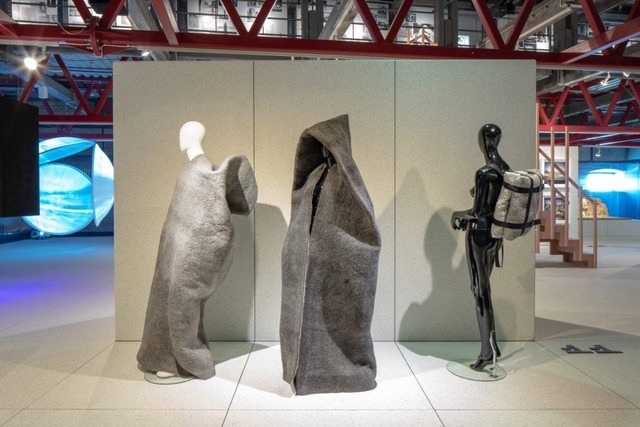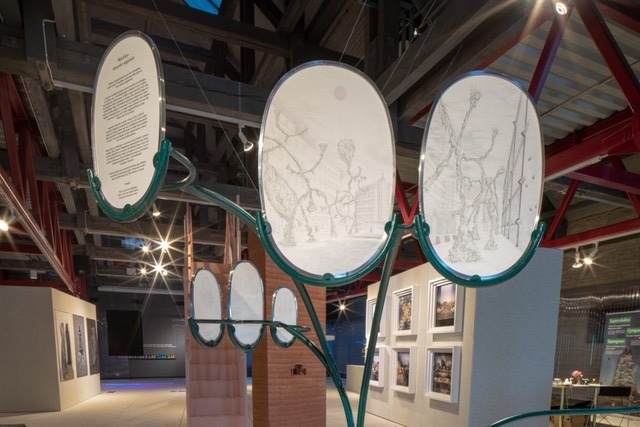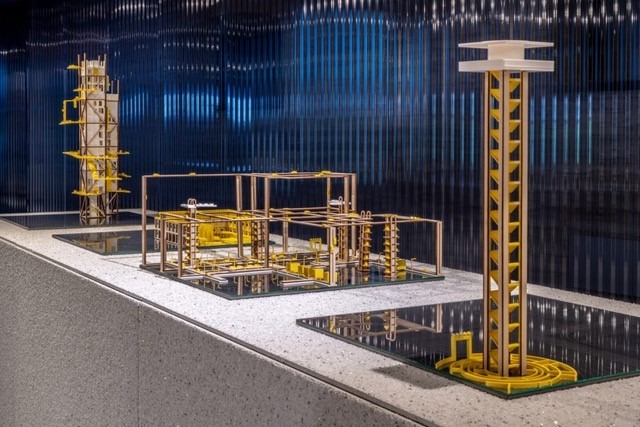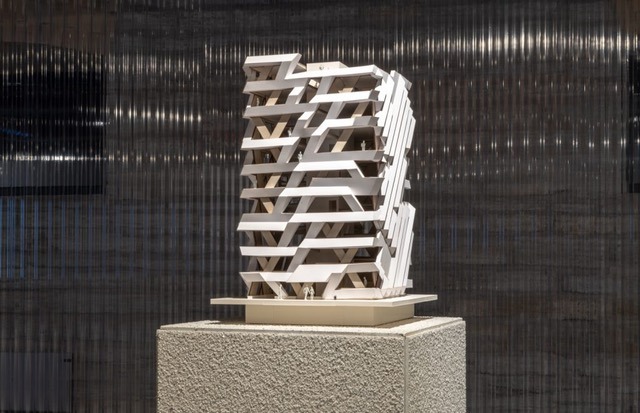
The Houses That We Need
Q&A with Jarmo Kauge, curator of the exhibition “The Houses That We Need” at the Estonian Museum of Architecture, Tallinn
The Museum of Estonian Architecture celebrates its 30th anniversary with the unprecedented group exhibition “The Houses That We Need” (on view till November 21), the theme of which is nothing short of all of humankind and its future. The exhibition talks about global dangers that are becoming ever more real – some of them self-inflicted, like potential climate catastrophes or technological singularity, while others are beyond our control, such as any threats from deep space. Participating architects were invited to design a work that could be conceptually called a building and which is aimed at procuring a more beautiful, secure and peaceful future on planet Earth.
Photos: Evert Palmets
The curator of the exhibition is art historian Jarmo Kauge, with whom Arterritory.com had a chance to do a short Q&A.
Looking at the exhibits, it is clear that the proffered "houses that we need" are very different in terms of aesthetics and concepts. Could you elaborate more on this versatility of ideas generated by the architects.
The exhibition features 16 participants – all Estonian architects from different generations, with an interior architect, a landscape architect, and two architects-cum-artists mixed into the bunch – all of whom have contributed a thoroughly researched project. No two exhibits are alike, yet at moments, you sense a certain thematic similarity. For example, care for the natural environment and appealing to taking better note of (what's left of) our natural surroundings, which can be seen in Anna-Liisa Unt's “Step”, a project which draws attention to the increasing lack of usable land; and Stuudio Tallinn's “Manifesto of the Everyday Life of Streets”, which proposes towering structures in our cities for nature to take root in. Or the apparent urge for mental and physical refuge in Peeter Pere's “New Limestone Architecture”, which repurposes an old limestone quarry as what seems to be a hideout for a monastic monk; and KUIDAS' cryptic rammed earth tower which hides a mystical chapel inside. There is a certain tonality of light spirituality in some of the projects. In many cases, the grave undertones are coated in super dark humour – an element knowingly integrated in the show by the choice of participants. Among the most thorough projects in the show is “Waste Temple” by Kadarik Tüür Arhitektid, in which the always cheeky authors have come up with nothing less than a whole new religion, which, you guessed it, revolves around waste, garbage. It's superb satire, albeit cringy.

From the start, I was eager to see whether architects would react to our rather grim-sounding brief with positive or negative visions, utopias or dystopias. Although a clear cut cannot be made, the overall vibe veers strongly towards the dystopian. In nearly all cases, the architects have chosen not to describe the potential future events that will have taken place, or the changed geopolitical, economic, or technological situations – we, as spectators, as readers, must use our imagination to fill in the gaps that oftentimes must include scenarios too horrific to even imagine as potentially realistic.


Could you highlight a work where the topic “The Houses That We Need” has been approached particularly provocatively?
One of the show's most satirical projects is molumba's “Supergreen” – a gigantic landscape building with deliberately ambiguous functionality that runs the entire length of Lasnamäe, Tallinn's biggest Soviet-era prefab housing district. The butt of the joke is Tallinn's Centrist City Government, its pathologically corrupt officials, their anachronistic car-centred ideologies, and most of all, Tallinn's tireless yet deeply ironic ambitions to grab the title of European Green Capital (which they somehow managed to secure for 2023). Molumba – or the City Government, as per the scenario of the work – came up with a single building that takes into account all the needed points to secure the title, thus saving a lot of boring trouble and giving their ambitions a sexy, Instagrammable and promotable face. What's crazy is the reality behind the allegory – the City Government's absolute indifference towards pleasant urban space and tendency to favour pokazuha [showing off – Ed.] instead of actually well-devised projects. In stark contrast to this kind of poking fun, there's PART's no-joke project “sLender”, a house that we very much need, indeed: a standardised eight-storey apartment house made of wood and based on the authors' actual works. It's locally sourced, simple to build and adaptable, not to mention all the ecological pros it has. It's a mystery to me as to why there's so little wood used in construction today – we have the know-how and the resources to basically replace concrete with wood right away, and we should – for the sake of humankind's future.


What do you see as the unifying thread that the architects have drawn attention to?
In a rather practical, no-nonsense way, the need to step away from our beaten tracks – the need for space in which to think, reflect, react. We are animals of habits and comfort. Our consciousness and self-awareness allow us to project thoughts long into the future, but as a whole, as the one and only species capable of either saving or blowing up the whole planet, we choose not to trouble ourselves too much with thinking about it. If I were to choose a motto for the exhibition, it would be “All for one and one for all”.

Have the architects brought any new, innovative materials or technical solutions to the table?
I think we're beyond that, although I would have welcomed such proposals. Perhaps the project most technically ambitious is Pluss' proposal to artificially produce snow and ice by means of huge “War of the Worlds”-inspired robots. By inducing a kind of man-made Ice Age, we could at least try and slow down the monstrously warming climate. A couple of projects offer wholly systematic approaches to basically making everything right. Among these, the most notable one is Laura Linsi & Roland Reemaa's “Allegory of a Water Treatment Plant”, which, based on the idea of new materiality, proposes to link everything we do and make with ways of clean decomposition. A clean future with no waste. Mind you, an important aspect of achieving this is supplanting concrete as a building material. It's as simple as that – the concrete industry is to blame for much of our warming climate. Of course, we could probably come up with new concrete-like biodegradable materials as alternatives to concrete, but for the time being, we have wood. Unfortunately, much of our forests end up in furnaces, or simply as firewood for the Dutch or as toilet paper for the Chinese. It seems to me there's so much accumulated knowledge of the common sense type that we choose to ignore, and instead, we just go with the flow that has been set by self-centred and ignorant industrialist interests. So how to change all this? I think science-based education is the key. We must all fight for a future where every human being on Earth acknowledges their part in the complex system we call ecology, and any (organised) action aimed at disrupting the balance of the ecosystem is considered a serious crime.

How would you characterise the overall feeling/atmosphere of the show?
One that induces discomfort and curiosity. But not without hope.
What is the one thing you want people to remember when they leave the exhibition?
We are all astronauts.
